How to use drones for photography
Drone's eye view
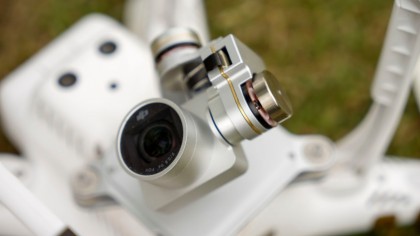
Using drones for photography
In the last year, drones (also known as 'multirotor' craft or 'quadcopters') have made the leap from niche gadget tech for the radio control enthusiast to a piece of serious imaging kit that every photographer wants to get their hands on.
The latest generation of drones are easier to fly, feature better cameras and have auto flight features that now enable anyone to capture professional quality footage with limited flying experience.
But the price and features of these drones vary greatly, so if you are looking to capture the world from a bird's eye perspective you need to make sure that the drone you purchase is designed for photography and is not just a hobby craft with a camera attached.
In this short guide we'll outline some of the basics that will help you make a decision on what drone to buy as well as the rules about flying how to stay safe and legal.
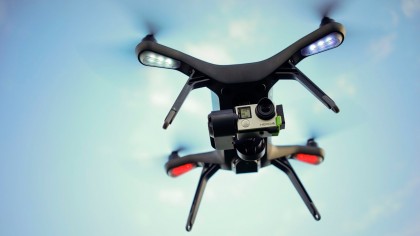
1. Getting to know your drones
What type of drone you should be looking at? First, be aware that not all camera-equipped drones are suitable for photographers. For instance in the UK without a special licence (Airworthiness Approval) from the Civil Aviation Authority (CAA), the drone you fly must be under 20kg in weight fully equipped (each territory has its own restrictions and it's worth checking them out).
In practice, this limits you to drones with either a built-in camera or one that enables the attachment of a GoPro or other small action camera. Either way, a video resolution of 1080p @ 60fps and stills capture of 12mp should really be the minimum spec you're looking for.
Other essentials are motorised gimbal and Live View feed direct from the craft to either the handset or a mobile device, and smart flight controls such as follow me, GPS waypoint navigation and auto return to home as well as auto braking are also essential.
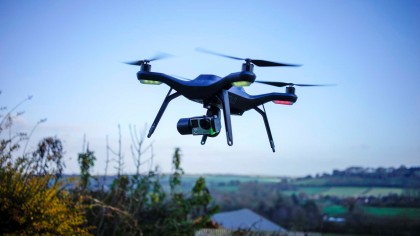
2. Make sure you stay legal
Where can you fly your drone? Ultimately, common sense is the key to flying drones but there are some very clear guidelines. These vary slightly depending on your country of residence, but for safe flying always ensure you do the following:
- Unless you have a license don't fly a drone over 20kg, if you are flying a drone of any weight commercially then ensure you get 'Operating Permission' from the CAA or equivalent.
- When flying, make sure you can alway see the drone, don't just rely on the live feed
- Keep the drone away from aircraft, helicopters, airports and airfields
- Don't fly within 50m of people, structures or buildings and never over roads or large gatherings of people such as at sports events and festivals.
- It's also a good idea to get public liability insurance if you're flying in parks
Stay safe
If you've own a drone and would like to know more about how and where you can fly then check out the Fly ICARUS course run by the guys at Aerial Motion Pictures. http://www.flyicarus.co.uk/
The course outlines everything you need to know about flying your drone for recreational use. You'll discover where it's safe to fly and the team leading the course will demonstrate a variety of best practices and show you how to keep your drone and equipment in the best flight ready condition.
If you're looking to fly a drone for commercial use then you'll need a Permission for Aerial Work (pfaw) certificate or equivalent licence for your territory. For more details on courses check outhttp://www.aerialmotionpictures.co.uk/ and the ICARUS course.
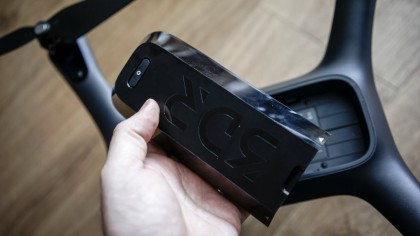
3. Capturing aerial shots
The technology contained within these small craft is extremely advanced, so along with the powerful motors that enable the craft to become airborne, the batteries also have to power the GPS, camera, live view and other sensors.
On average, the batteries for most current drones will allow around 20 minutes of flight before a cell change is needed. As with any other vehicle, the harder you fly the less flight time you'll get.
Most manufacturers will offer additional battery packs, but these can often be expensive – as much as £100 ($150, AU$208) or more – so it's well worth checking your budget for after market accessories before you buy.
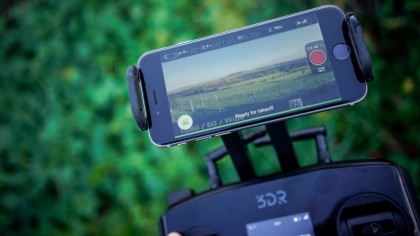
4. Composition from a distance
The secret behind the ease of flight for the latest generation of drones is GPS. These craft have smart flight controllers which use global positioning data to enable stable and automated flight features such as auto return to home.
You'll need to see what you're filming, so wireless live view communication between the craft and a handset or mobile device is essential – and thankfully a pretty standard feature on the latest batch of drones. Communication comes in two forms, either through a Wi-Fi or 2.4/4.8GHz connection.
The 2.4/4.8GHz connections are generally better at a distance and more reliable. At present, mobile devices such as iPhones are often used as the live view display and this connects directly to the handset, but there are an increasing number that build the display neatly into the controller.
The other essential is the ability to adjust the tilt of the gimbal from the controller so you can film the horizon or tilt towards the ground. Some drones even enable you to adjust the camera settings such as exposure, resolution and frame rate.
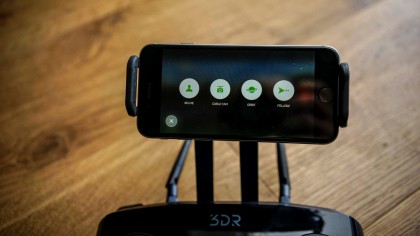
5. Smart Features
Drones are unmanned craft and increasingly this means that they are packed with smart flight features. A year ago this meant that some had auto take off, landing and braking, but now these essential controls have been joined by autonomous flight modes such as follow me, Selfie and 360 view.
These transform the use of drones, turning what had essentially been an entertaining addition to the photographer's kit bag into a truly useful and time-saving tool.
Features such as an A-to-B point setting enable you to quickly set points for the drone to fly between, which means that you can capture incredible panning shots, for example, without the need for trolley systems. For anyone new to drone flying, though, losing the drone is the biggest worry, so now the most valuable mode for many owners is the home mode.
This is usually accessed through a single touch button on the controller – once clicked the drone will instantly fly back to its place of launch.
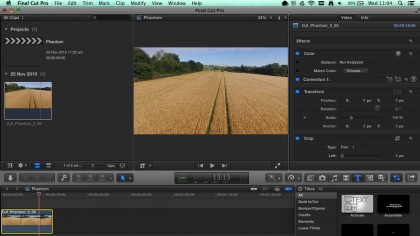
6. Make the most of your footage
Drones enable you to capture footage and stills that would be otherwise impossible, but once captured that video footage (or still image) still needs editing and uploading to its final destination.
The cameras used on the majority of drones are very similar to the GoPro action camera and the footage itself can be edited in exactly the same way using video editing software like Adobe Premiere or Apple's Final Cut Pro X as two great examples of applications that can be used to edit and upload video.
Lower-cost software can work just as well and many cameras are supplied with bespoke video editing tools. Still images are generally captured in the JPEG format but an increasing amount of these small cameras are now adding RAW file compatibility as well. Vimeo and YouTube are favourite destinations for uploading video.
The YouTube live Events feature can also enable the live streaming of footage from some of these drones, and is an area that is rapidly expanding.
Alastair is a photographer, filmmaker and tech writer who has been working in the publishing industry since the late 1990s. For more than 25 years he has covered photography, video and technology across Future's photography, technology and gaming brands. He runs a photography and video production company and lectures in TV and film. He can usually be found testing mini PCs or prototyping and prop building with the aid of 3D printing.